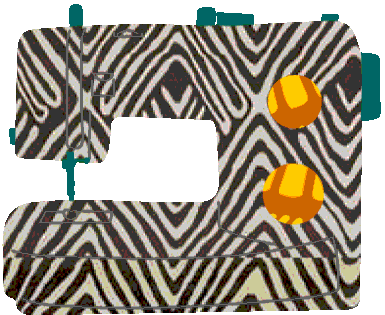Fashion in West Africa: who copies who?
Fashion in West Africa: what's going wrong among designers?
In West Africa, particularly in some countries such as Ivory Coast, several events are organized to highlight African designers. These events are welcome, as the sector needs to be revitalized.
A few years ago, Ivory Coast went through an unprecedented political and economic crisis. This climate of tension had shaken most sectors of the country, including fashion. But today, many things have changed. From Cocody to Yopougon via Adjamé, several festivals, fashion shows and even fairs are organized to promote the fashion and textile sector.
However, when you assist to those events, you realize that some products are so similar that you think they are all made by the same designer. But it isn't.
So, what could justify this situation?
A cultural diversity that can be source of inspiration
It isn't easy to find an answer to this situation when you know that Ivory Coast has a very diversified culture. From Abidjan to Yamoussokro via Gagnoa and Korhogo, we discover different cultures. Apart from cooking recipes and languages that are typical of certain regions, traditional loincloths also distinguish them.
Thus, we have the Kenté loincloth among the Akan people, the Baoulé woven loincloth among the Baoulé people, the Sénoufo loincloth or even more traditional loincloths among the Yacouba and the Gouros. These loincloths prove that the traditional loincloth occupies a place of choice in the Ivorian culture. Ivorian designers could therefore use this variety of loincloths for their creations and give them another image.
For a long time, and to this day, we note that Ivorians wear these traditional loincloths only for special occasions: traditional weddings, religious festivities, or family ceremonies.
It is quite the opposite with the Wax loincloths which are very adulated by the populations of West and Central Africa. In addition, Wax is now present on the international scene. It has even been adopted by several American stars like Rihanna, Beyonce or Kim Kardashian. This iconic fabric really leaves no place for traditional pagnes on the market.
Apart from some designers who take the risk of using traditional loincloths to make their products, the market is rather deserted. Yet, there is so much to gain by using these traditional loincloths. Indeed, it would vary the products on the market. But again, things are not as simple as they seem.
Traditional loincloths aren't easy to work with
The talent of some artisans has given a second breath of life to traditional loincloths. But not all loincloths are easy to work with. According to Massal Touré, founder of the Massal Art Gallery, traditional loincloths like the Baoulé loincloth are very beautiful. But there isn't many people who know how to turn them into finished products. This could therefore justify the fact that few creators use them. They mostly prefer to focus on the Wax, less complex to transform and maintain.
The direct consequence is that many designers offer products in Wax. But apart from the fact that we find the same material in the creations of the greatest number, there is also a problem of creativity. Indeed, it isn't uncommon to see on the social networks some designers complaining that another creator stole one of their ideas. But when you know that we're all inspired by someone or something, it's hard to know exactly who's copying.
The problem may be that the same material is used by most designers. Since they don't leave their comfort zone, they have trouble proposing original creations. Creations made from a traditional loincloth can be completely different from those obtained from a fabric like Wax because of the method of work that is not the same.
In the end, only the most talented manage to succeed. One of the success stories in the sector remains Nana Wax, a brand created by a young woman who quickly won the hearts of many lovers of Wax. Certainly, there are many other creators who have made the difference and established themselves in the market, but they are not numerous.
